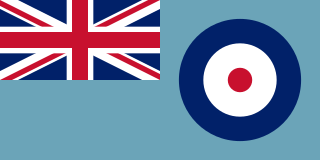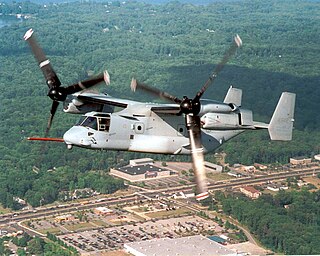
The Desert Air Force (DAF), also known chronologically as Air Headquarters Western Desert, Air Headquarters Libya, the Western Desert Air Force, and the First Tactical Air Force (1TAF), was an Allied tactical air force created from No. 204 Group RAF under RAF Middle East Command in North Africa in 1941 to provide close air support to the British Eighth Army against Axis forces. Throughout the Second World War, the DAF was made up of squadrons from the Royal Air Force (RAF), the South African Air Force (SAAF), the Royal Australian Air Force (RAAF), the United States Army Air Forces (USAAF) and other Allied air forces.

The Eighth Air Force (Air Forces Strategic) is a numbered air force (NAF) of the United States Air Force's Air Force Global Strike Command (AFGSC). It is headquartered at Barksdale Air Force Base, Louisiana. The command serves as Air Forces Strategic – Global Strike, one of the air components of United States Strategic Command (USSTRATCOM). The Eighth Air Force includes the heart of America's heavy bomber force: the Northrop Grumman B-2 Spirit stealth bomber, the Rockwell B-1 Lancer supersonic bomber, and the Boeing B-52 Stratofortress heavy bomber aircraft.
The Egypt–Libya Campaign is the name used by the United States military for the US contribution to the Allied Western Desert Campaign, during World War II. From 1942, U.S. forces assisted the British Empire in fighting Axis forces in Egypt and Libya. The U.S. Egypt–Libya Campaign was part of what the US military called the Mediterranean Theater of Operations.

The Ninth Air Force (Air Forces Central) is a Numbered Air Force of the United States Air Force headquartered at Shaw Air Force Base, South Carolina. It is the Air Force Service Component of United States Central Command (USCENTCOM), a joint Department of Defense combatant command responsible for U.S. security interests in 27 nations that stretch from the Horn of Africa through the Persian Gulf region, into Central Asia.

No. 37 Squadron was a Royal Flying Corps (RFC) fighter squadron during the First World War, a Royal Air Force bomber squadron during the Second World War, and performed maritime reconnaissance in the years 1947–67.

Royal Air Force Shipdham or more simply RAF Shipdham is a former Royal Air Force station located 3 miles south of Dereham, Norfolk, England.

The 18th Special Operations Test and Evaluation Squadron is an active unit of the United States Air Force, based at Hurlburt Field, Florida. The squadron performs field testing for Air Force Special Operations Command, evaluating aircraft, equipment, and tactics in realistic battlespace environments to provide decision-makers with accurate, timely, and complete assessments of mission capability. From concept development to system fielding, the unit's mission improves the survivability and combat capability of special operations forces worldwide.

The 859th Special Operations Squadron is a reserve unit of the United States Air Force. It was first activated in October 1942 as the 517th Bombardment Squadron, when the Army Air Forces replaced National Guard observation units that had been mobilized and were performing antisubmarine patrols off the Atlantic coastline. A month after its activation, the squadron was redesignated the 12th Antisubmarine Squadron. In August 1943, the Army Air forces began turning the antisubmarine patrol mission over to the Navy and the squadron moved to California, where, as the 859th Bombardment Squadron, it formed the cadre for the 492d Bombardment Group.

Northwest African Air Forces (NAAF) was a component of the Allied Mediterranean Air Command (MAC) during February–December 1943. It was responsible primarily for air operations during the Tunisian Campaign and bombing of Italy. Its commander was Lieutenant General Carl Spaatz of the United States Army Air Force. NAAF was created following a reorganization of the command structure of Allied air forces in the Mediterranean Theatre. The other components of MAC were Middle East Command (MEC), AHQ Malta, RAF Gibraltar and 216 Group.

The Mediterranean Allied Air Forces (MAAF) was the major Allied air force command organization in the Mediterranean theater from mid-December 1943 until the end of the Second World War.

The 44th Fighter Group is an Air Reserve Component (ARC) unit of the United States Air Force. It is assigned to the Tenth Air Force, Air Force Reserve Command (AFRC), stationed at Tyndall Air Force Base, Florida. The 44 FG is an associate unit of the active duty 325th Fighter Wing of the Air Combat Command (ACC). If mobilized to active duty, the 44 FG is operationally gained by ACC. Otherwise, the 44 FG operates as a geographically separated unit (GSU) of AFRC's 301st Fighter Wing at NAS JRB Fort Worth, Texas.
The Mediterranean Air Command (MAC) was a World War II Allied air force command that was active in the North African and Mediterranean Theater of Operations (MTO) between February 18 and December 10, 1943. MAC was under the command of Air Chief Marshal Sir Arthur Tedder, whose headquarters were next to those of the Supreme Allied Commander, General Dwight D. Eisenhower, in Algiers, Algeria, during the planning of the Allied campaigns in Tunisia, Pantelleria, Sicily, and the invasion of mainland Italy during the war.

No. 201 Group was a group of the Royal Air Force during the Second World War.

Air Headquarters Malta was an overseas command of the Royal Air Force (RAF) during the Second World War. It was established on 28 December 1941 by renaming RAF Mediterranean under Air Vice Marshal Hugh Lloyd. Lloyd was named Air Officer Commanding in Malta on 1 June 1941.

No. 211 Group RAF is a former Royal Air Force group which disbanded in September 1943. It initially formed in December 1941, then disbanded in February 1942. The group immediately reformed in March 1942 as No. 211 Group within RAF Middle East Command.

The 763rd Bombardment Squadron was a former United States Army Air Forces unit, activated during World War II. After training in the United States, it deployed to the Mediterranean Theater of Operations, where it participated in the strategic bombing campaign against Germany, and earned a Distinguished Unit Citation for its actions. Following V-E Day, the squadron moved to Brazil, where it became part of Air Transport Command, returning troops to the United States. It was inactivated on 26 September 1945.

This is a list of United States Army Air Forces Consolidated B-24 Liberator units and formations during World War II including variants and other historical information. Heavy bomber training organizations primarily under II Bomber Command in the United States and non-combat units are not included.

The 376th Expeditionary Operations Group was a provisional United States Air Force Air Combat Command unit. It was stationed at the Transit Center at Manas International Airport, Kyrgyz Republic, up until 2014.

The 4th Bombardment Squadron is an inactive United States Air Force unit. It was last assigned to the 34th Bombardment Group at Sioux Falls Army Air Field, South Dakota, where it was inactivated on 28 August 1945.

This is a list of United States Army Air Forces B-17 Flying Fortress units of the United States Army Air Forces, including variants and other historical information. Heavy bomber training organizations primarily under II Bomber Command in the United States and non-combat units are not included.


















